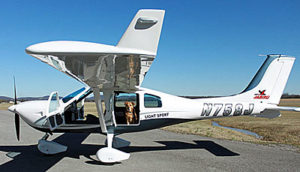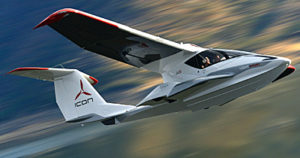One of the most common questions I got at Oshkosh 2016 was the title of this article. I’m only one person with an opinion, but since I work with many airframe producers in the LSA space, I heard this question fairly often, several times from airplane sellers who were curious what other producers thought.
Just shy of five years ago, EAA and AOPA caught the LSA industry off guard by announcing plans to push FAA to drop the Third Class medical. Most LSA professionals likely agree with the basic idea that FAA ought to keep their noses out of the recreational end of aviation. Many feel that the medical requirement has prevented almost no accidents. Nonetheless, this new initiative took aim at the primary reason LSA builders were then selling airplanes like crazy. If you wanted to fly without a medical you had ultralights (Part 103… and still do), or sailplane motorgliders, or Light-Sport Aircraft. I don’t believe for a minute that not needing a medical is the only reason to consider a new LSA but it was a biggie, no doubt.
So, what’s the answer? Will this reform harm LSA or not? How is it affecting the industry? Worthy questions, all. To read more detail about the medical proposal, see this article.

Jabiru‘s J-230 is based on a four seater from Australia, explaining its cavernous aft cabin complete with a third entry door. photo from Eric Evans Aviation
My response to the “will it hurt” question is, simply, “No.” When the alphabets announced their intention in the fall of 2011, it had an immediate effect. Vendors I asked said they quickly got cancellations. Buyers who were probably never very serious about a new LSA purchase said things like, “Now, I can instead hold off and buy a $50,000 (30-year-old) Cessna. I no longer have to buy a new LSA.”
I compare the medical question to the way the stock markets work. At the first hint of bad news (a war, recession, terrorist attack, or the Fed raising interest rates), investors quickly price-in the results they expect. Stocks plummet overnight, even though the bad news has not yet occurred and may never come to pass. The situation with LSA was similar. As soon as those reluctant LSA buyers heard they had another choice — even one that might never come and certainly not soon — they took back their dollars and held onto them. This is human nature at work.
Therefore, at Oshkosh, news that the third class medical reform was coming didn’t change things much. It had already been “priced-in” to pilots’ purchase decisions.
However, those who want a new airplane with all the features they desire remain interested in Light-Sport Aircraft. Purchase prices range from below $50,000 to over $200,000 but that is still far less — one eighth to one half the cost — of almost any new Type Certified GA plane. (And, YES, you can buy a fun, well assembled, ready-to-fly LSA for $40-85,000!)

Icon was awarded a weight increase for their A5 seaplane; they will fly at 1,510 pounds. photo courtesy Icon Aircraft
Nonetheless, progressive light aircraft manufacturers — of kit-built or fully-built LSA or LSA-type airplanes — saw the trend coming and several offered new or revised designs.
In my previous article, I spoke about the new Murphy Radical. I also wrote about the Titan-powered Kitfox, and we have several other entries that are similar. These aircraft, like many LSA, have been designed to carry higher gross weights. They are limited to 1,320 pounds or 1,430 pounds (for seaplanes) because of FAA constraints. Some, for example, Jabiru J-230 — which started as a four seater in Australia — or Paradise P1NG from Brazil among several others, have been designed to significantly higher gross weights than FAA allows for LSA. These aircraft have always been able to lift more weight; they were placarded at 1,320 or 1,430 because of LSA rule limits.
At Oshkosh, Rans introduced their Outbound model with a gross weight listed at 1,800 pounds that calculates to a payload of 625 pounds… “the highest payload design ever offered by Rans,” said the company. This model also offers a higher speed of 150 mph cruise (LSA are speed limited at 138 mph or 120 knots). In the world of a Private Pilot no longer needing an FAA Airman’s Medical, such larger aircraft may have good appeal.
One More Thing — A familiar rumor began circulating at Oshkosh, encouraged by a member organization senior leader comment heard at AirVenture. A push is supposedly afloat to increase the weight limit of Light-Sport Aircraft. We’ve heard this before and it has been steadfastly denied by FAA but now that Icon and Terrafugia received weight increase exemptions, who knows? If I hear more, I’ll keep you informed.



Leave a Reply